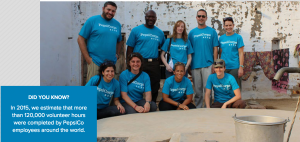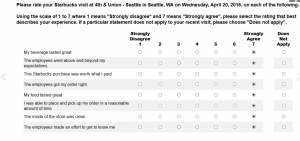The first impression when someone mentions keywords like “business”, “corporation”, or “marketing” might be an image of a stereotypical group of snakes-oil businessmen gathered at a meeting, discussing ways in which they can trick the money out of the customers’ pockets. Whether or not that is your current impression, there always seemed to be an air of unethical behavior that surrounds the idea of capital markets and business, due to its prioritization of generating profit.
And businesses are entirely aware of this situation.
That is why companies, such as TOMS, that generate revenue streams from social responsibility are successful. Reading my peer, Sofia Martinez’s blog post on TOMS induced a curiosity in the emerging ethical businesses, which claim to be brands for humanity, evident in Sofia’s comment that TOMS’ business model of ‘one for one’ accounted for the majority of its popularity. A particularly applicable phrase was, “[TOMS] has appealed to a new market where ethically responsible consumers choose these … shoes because they feel like they are being part of this social cause.” The subtlety behind the words “feel like,” foreshadows the cons of these businesses that capitalize on consumers’ desire to feel justified in their purchases. TOMS Shoes make it easy for the customer to forget that they are a business, and perceive them as a fundraising company dependent on charity―an intelligent way to position themselves compared to other shoe companies.
Businesses are quick to move as they notice a new way of marketing, in which philanthropy can be capitalized upon. What happens when other businesses are a carbon copy of your own? Harvard Business Review’s Umair Haque’s post on this exact situation introduces Pepsi Co. as an example. He proposed the idea of businesses moving from “great” to “good” due to this concern of duplication in markets. Pepsi Co. is a “great” company in aspects of generating revenue, and scale of operation, so why should it go from “great” to mediocre? You might have guessed, “good” means something else. It embodies social responsibility, and humanitarian causes; intangibles that many consumers are far more concerned of than before. There are many companies selling sugar water out there, and most of them more or less taste the same. Instead, businesses must be the ones to give consumers a reason to purchase.

Pepsi Co. employees volunteer around the world. Source
Does business smudge the line of real altruistic behavior? There is no definite answer. Being “good” is the new rule to survival. It is imperative for businesses to understand that customers no longer choose them solely for their products and services, but for their values. Personally, I don’t see harm in practicing ethical businesses if consumers’ money is going towards the cause the business claims it to be.
Word Count: 450
Sources:
Haque, U. (2010, February 03). The Great to Good Manifesto. Retrieved October 30, 2016, from https://hbr.org/2010/02/great-to-good
Kate. (2012, April 16). TOMS Shoes: Doing More Harm than Good? Retrieved October 31, 2016, from https://bizgovsociii.wordpress.com/2012/04/16/toms-shoes-doing-more-harm-than-good/



